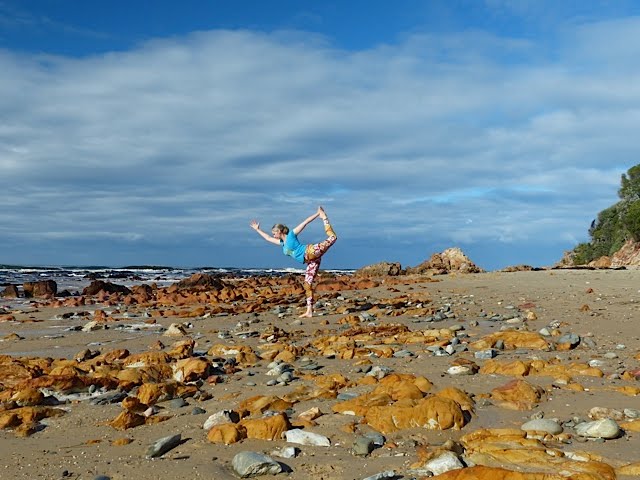Gratitude
Why I like yin yoga?
Much of life is taken up being busy, rushing from here to there like a bee from flower to flower. Of course, some of us consciously take time to slow down. My sankalpha a couple of years ago was slow down, breathe, and it did work for a while before I got caught up in the whirl of life. There are so many beautiful, amazing and awesome as well as painful, horrible activities and sensory experiences to draw us away from stillness that exquisite peace within. I teach an active or dynamic style of yoga in my evening classes, what the modern yoga world is calling 'yang' though I try to encourage myself and my students to use the breath to mind the mind and make the class a meditation. There is always a set of slow inward focused poses towards the end of class. I guess a mixture of active or 'yang' and quiet or 'yin'.
The experience of just doing a still or 'yin' yoga practice is truly an opportunity to be with whatever comes up whether that is physical, emotional or mental tension, discomfort, as well as spaciousness, and expansiveness. For a quiet practice is not just about focusing on the more challenging sensations - there is joy, compassion and love nestled in the heart and other places in the mind and body. Worthwhile seeking them out and dissolving the tension into these spaces. A soft, quiet practice where I am just being allows me to sit with the discomfort in a way that is reflective of life. It comes and it goes. As does joy although love and compassion stay. Everything is impermanent - transitory. The exquisite stillness of just being lets me come to terms with this knowledge: everything is change, everything is in flux, everything is free. That is not to say that a similar experience occurs in moving practice after all I am only practicing nothing needs to be anything - just be, just feel, just let go. Om shanti
A yin yoga pose Upavistha Konasana
A yang style yoga pose: Bakasana (I need to lift my head...always room to move)
Effortless effort
Let go and fly in crow pose Photo by Marc Perri
How Everything Adores Being Alive
What
if you were
a beetle,
and a soft wind
and a certain allowance of time
had summoned you
out of your wrappings,
and there you were,
so many legs
hardening,
maybe even
more than one pair of eyes
and the whole world
in front of you?
And what if you had wings
and flew
into the garden,
then fell
into the up-lipped
face
of a white flower
and what if you had
a sort of mouth,
a lip
to place close
to the skim
of honey
that kept offering itself -
what would you think then
of the world
as, night and day,
you were kept there -
oh happy prisoner -
sighing, humming,
roaming,
that deep cup?
Mary Oliver
From the collection: Why I wake early
Beacon Press, Boston 2004




